In our previous blog post we had discussed about What is a Dynamic Dashboard in Salesforce.In these blog post we discuss about What are Bucketing Reports in Salesforce
Contents
What are Bucketing Reports in Salesforce
Definition of Bucketing Reports:-
Bucketing Reports in Salesforce allow users to categorize report data without creating new fields or modifying existing ones. This is done by defining a set of ranges, or “buckets,” into which data values are grouped. This feature is particularly useful for segmenting data into meaningful categories for analysis and reporting.
Purpose and Benefits:-
The primary purpose of Bucketing Reports is to simplify data analysis by grouping data into custom categories. The benefits include:
- Enhanced Data Analysis: Easily categorize and analyze data without altering the underlying data structure.
- Time-Saving: Quickly segment data for reports without needing to create additional fields.
- Flexibility: Adjust and refine categories as needed to better suit reporting requirements.
- Improved Insights: Gain clearer insights by organizing data into relevant and actionable groups.
Key Features of Bucketing Reports:-
Customizable Buckets:-
Users can create buckets with custom ranges or values that make sense for their specific analysis needs. For example, sales revenue can be bucketed into categories like “Low,” “Medium,” and “High.”
No Need for Additional Fields:-
Bucketing allows for data categorization directly within the report, eliminating the need to create and manage additional fields in the Salesforce database.
Dynamic Grouping:-
Data can be dynamically grouped based on the defined buckets, enabling more intuitive and relevant data segmentation.
Support for Multiple Data Types:-
Bucketing can be applied to different data types, including numbers, text, and picklist values, making it a versatile tool for various reporting scenarios.
Creating Bucketing Reports in Salesforce:-
Step-by-Step Guide:-
- Navigate to Reports:
- Log in to Salesforce and navigate to the Reports tab.

- Create a New Report:
- Click on “New Report.”
-



What are Bucketing Reports in Salesforce - Select the report type that best suits your data analysis needs and click “Create.”
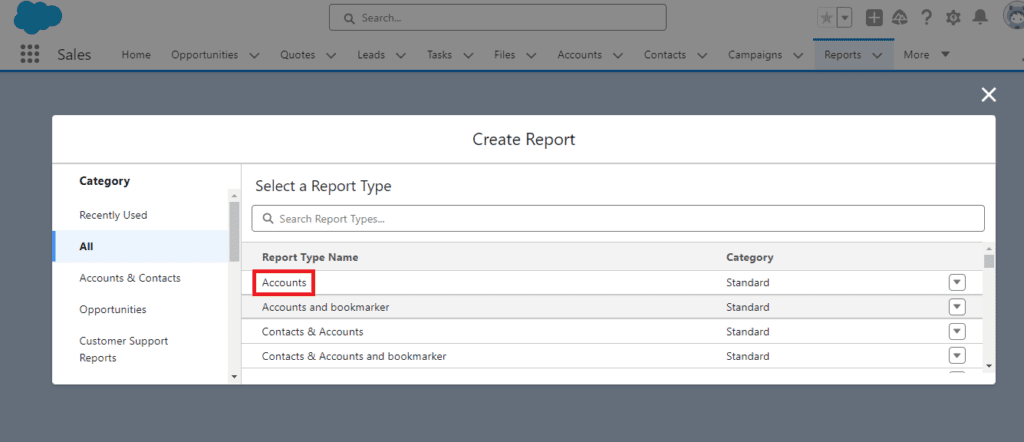

- Add a Bucket Field:
- In the report builder, find the field you want to bucket in the Fields pane.
- Drag and drop the field into the “Bucket Fields” section.
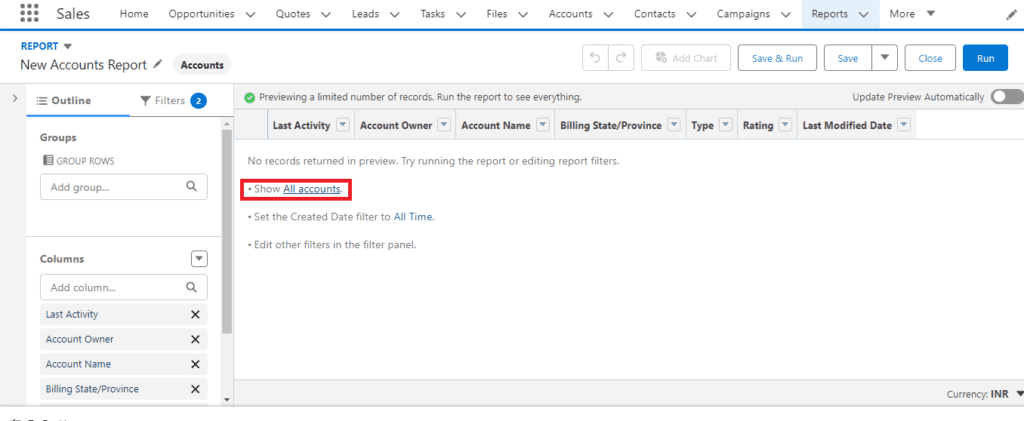

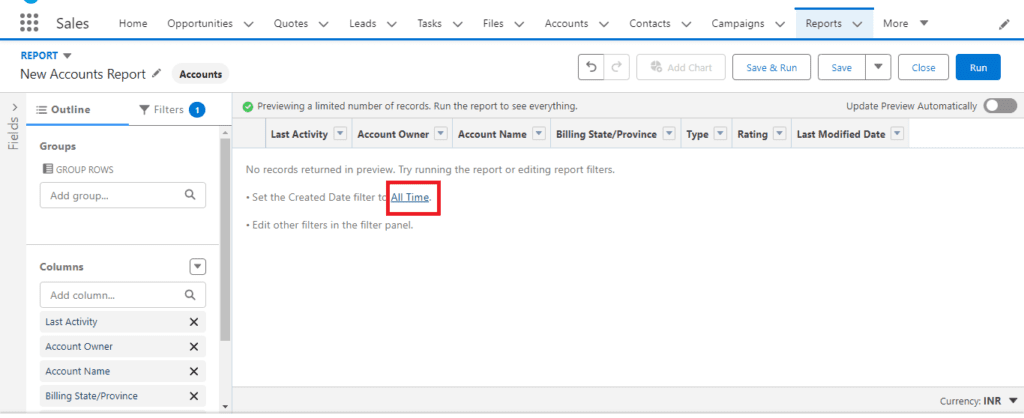

- Define Buckets:
- Click on the bucket field to open the Bucketing editor.
-

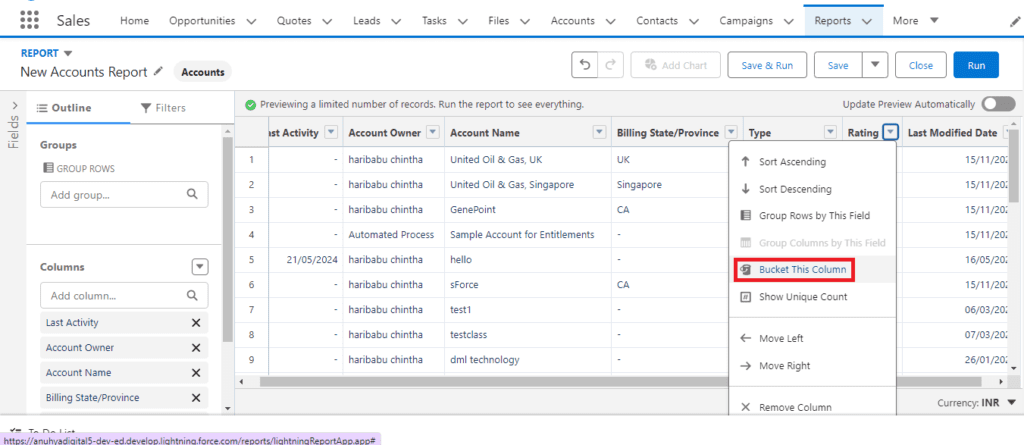
What are Bucketing Reports in Salesforce - Define your buckets by setting ranges or specific values. For example, you can create ranges for numerical values or categories for text fields.
- Name each bucket to clearly represent the grouped data.
-


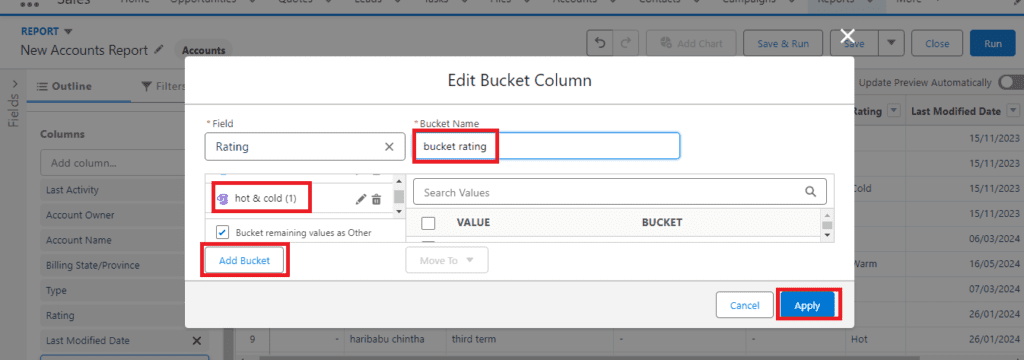
What are Bucketing Reports in Salesforce - Apply and Run the Report:
- Apply the bucket field to the report and configure any additional filters or groupings as needed.
- Click “Run Report” to generate the report with the new bucketed data.
-



What are Bucketing Reports in Salesforce
Best Practices:-
- Keep Buckets Relevant: Ensure that the buckets you create are meaningful and relevant to the data analysis you need.
- Review Regularly: Regularly review and adjust your buckets to reflect changes in business processes or data trends.
- Combine with Other Filters: Use bucketing in combination with other report filters and groupings to gain deeper insights.
- Document Your Buckets: Clearly document the criteria for each bucket to ensure consistency and understanding among report users.
Use Cases for Bucketing Reports:-
Sales Performance Analysis:-
Segment sales performance by different revenue ranges, regions, or product categories to identify trends and areas for improvement.
Customer Segmentation:-
Group customers into different categories based on purchase behavior, lifetime value, or engagement levels to tailor marketing strategies and improve customer service.
Financial Reporting:-
Categorize financial data into different expense or revenue buckets to analyze spending patterns, budget adherence, and profitability.
Operational Efficiency:-
Segment operational data, such as service response times or project completion rates, into buckets to identify bottlenecks and areas for process improvement.
Conclusion:-
Bucketing Reports in Salesforce are a powerful tool for categorizing and analyzing data without the need for additional fields or data modifications. By defining custom buckets, users can gain clearer insights, improve data analysis, and enhance decision-making processes. Implementing best practices and leveraging the flexibility of Bucketing Reports can help organizations make the most of their Salesforce data.
We want to more about What is Buckting Reports in Salesforce Click HERE
FAQs:
What are Bucketing Reports in Salesforce?
Bucketing Reports in Salesforce allow users to categorize report data into custom ranges or values without creating new fields, facilitating easier and more meaningful data analysis.
How do I create a Bucketing Report in Salesforce?
To create a Bucketing Report, navigate to the Reports tab, create a new report, add a bucket field, define your buckets, and run the report to see the bucketed data.
What are the benefits of using Bucketing Reports?
The benefits include enhanced data analysis, time savings, flexibility in categorizing data, and improved insights from organized data segments.
Can I adjust buckets after creating a report?
Yes, you can easily adjust and refine buckets in the Bucketing editor, ensuring that the report remains relevant and useful as data trends change.
What types of data can I bucket in Salesforce reports?
You can bucket various data types, including numbers, text, and picklist values, making Bucketing Reports versatile for different reporting needs.
In our next blog post we will discuss about What is Email Address Internationalization
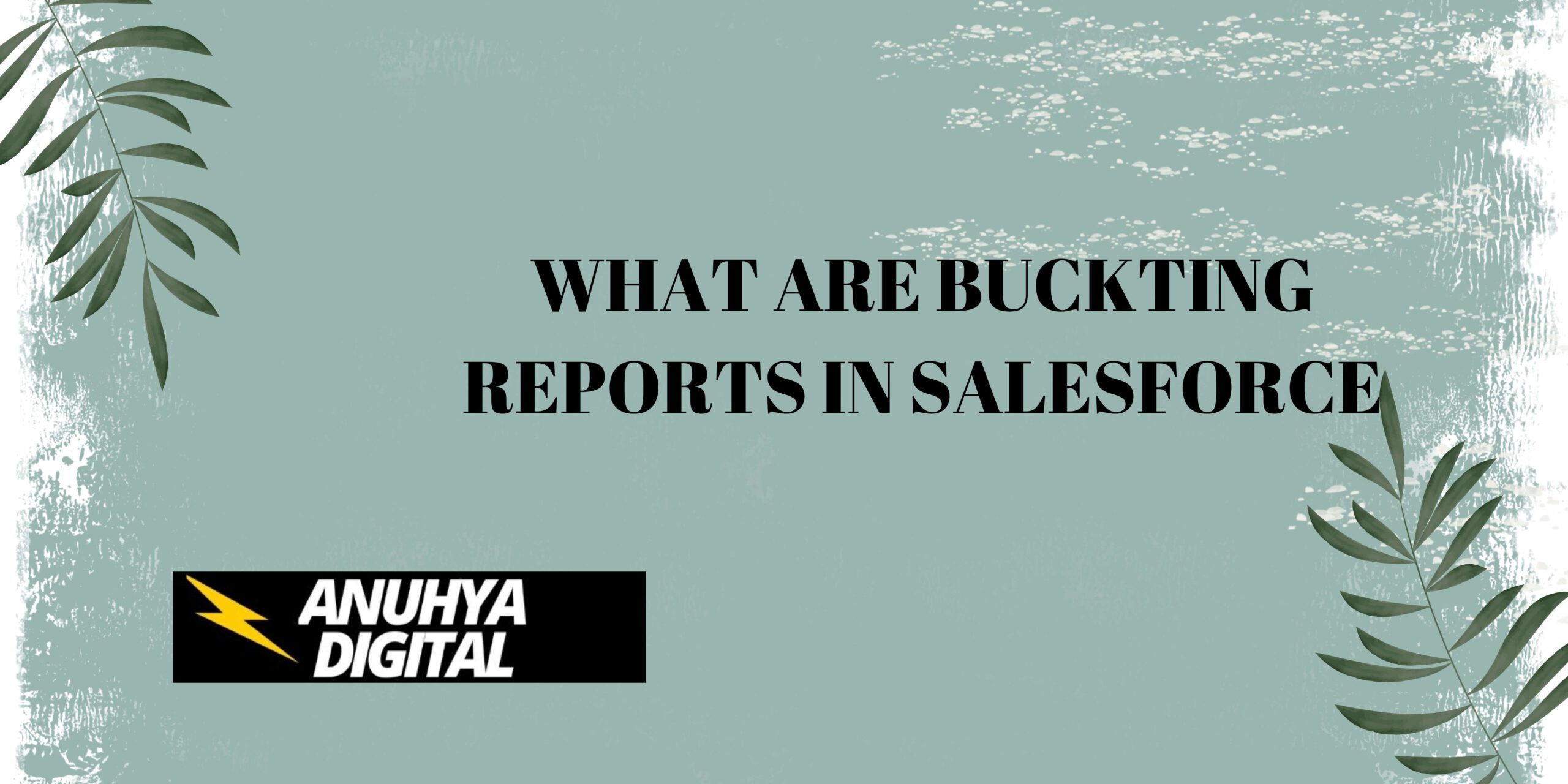
3 thoughts on “What are Bucketing Reports in Salesforce”